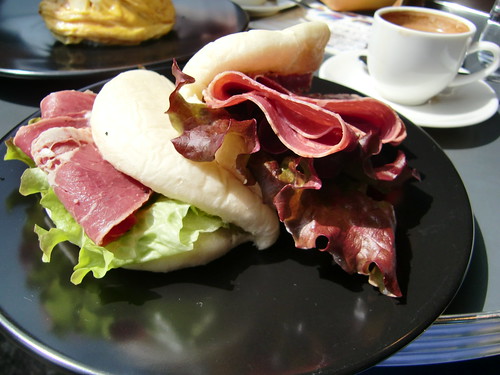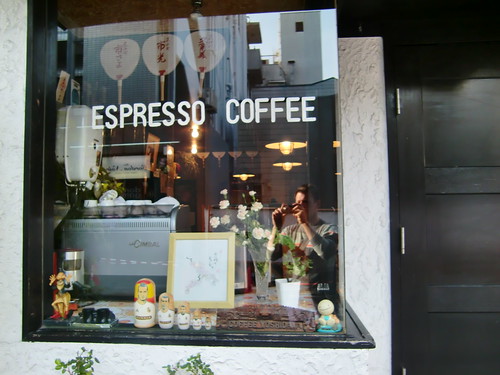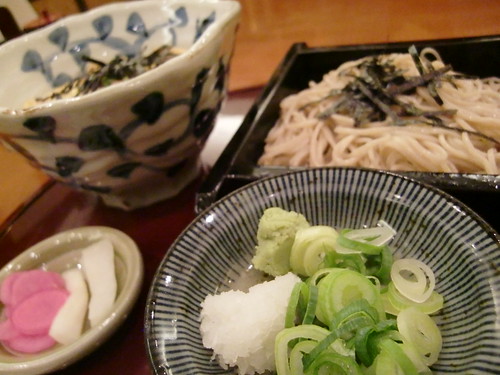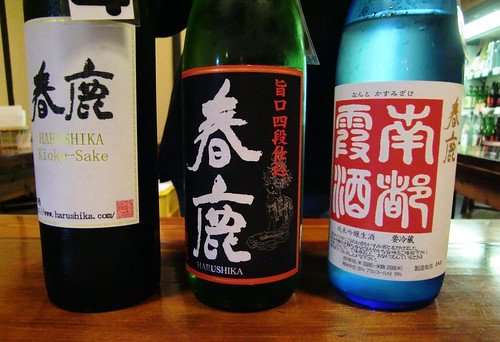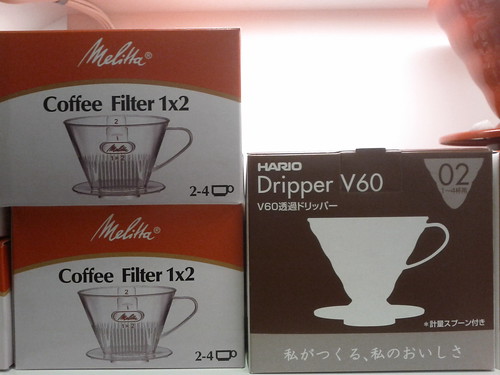Day 5
Still in Kyoto, today we hit the obligatory hard core tourist temple route. Photos galore over on Flickr, but suffice it to say that even with my embarrasingly superficial knowledge of Buddhism, Shintoism, temple architecture and landscaping, strolling through Kyoto’s reknown temples is an immeasurable pleasure. If you ever find yourself around, make sure to occasionally stray from your guidebook’s recommendations and just go explore – in Kyoto, there’s always a backyard, tea house or path that’s truly worth discovering.
Plenty of very yummy snacks in between. Not so secretly, that’s my hidden agenda in these walking tours: finding nice spots to snack. Covered today, among some other things, honey sesame ice cream, a Kyoto-style pastrami sandwich, and a bowl of freshly made Udon with vegetable tempura – as well as a 9 Euro double espresso, which sets the pricing bar slightly higher still. Some of the above seen below:
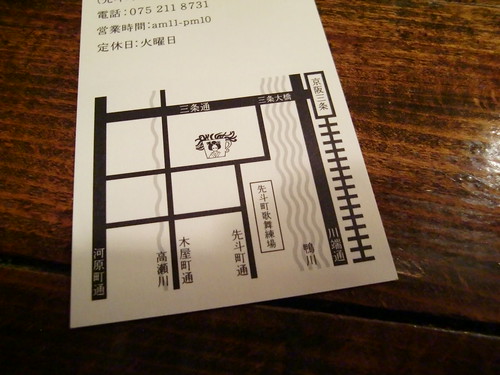
Home of the nine euro double espresso.
We had planned a hiking trip, which isn’t going to happen to due cold weather (we came badly prepared, hoping for spring weather). Instead, we’re re-rounting, to Nara first, then to Takayama. Hot sake to seal the day.
Day 6
Had to mail a print to Germany. From other trips, I remember the hastle at post offices, what with different options (express, air, overland) and customs forms. Not so in Japan: Despite most forms being largely Japanese with minimum English, and despite the train station’s post service staff speaking as little English as I speak Japanese, the employees on the ground go out of their way to help me sort everything out. In hardly five minutes it’s all wrapped up and sorted out. Surprisingly hard, though, to find ATMs that accept our cards. Again, the post office can help with what seem to be special “international” ATMs.
That sorted and a quick snack of cold Soba noodles and fried vegetable tempura later, we head to the train platform. Arrived Nara after a brief train ride. In Japan, private rail providers sometimes run their own train stations, so you might end up at a slightly different place than when going with JR, the government-run train network. Nara is, like Kyoto, a historically super significant town: First permanent capital (in the 7th/8th century, before the capital moved with each new emperor), 8 UNESCO World Heritage Sites, some of Japan’s most impressive temples and statues. We arrive in grey weather, it’s raining heavily, and there’s a strong wind on.
Taking some hints, we partake in a Sake sampling. I had no idea how much variety there is in Sake – I swear, had someone given me these five beverages to sample and asked what it is, I wouldn’t have been able to tell that they all were the same drink. From super dry to sweet seasonal Sake, to a cloudy and a sparkling one (to go with Sushi, or as an aperitiv, or with cheese or chocolate), there’s a huge range. By the looks of it, this place exports. It’s all very professional, with a bit of background on the process, and friendly but refreshingly unceremonial service. To round things off, we head to the photography museum, which promises to be dry. Asking for directions on the way, an elderly lady insists we take one of her spare umbrellas, lest we might get even more wet. The kindness of everyone we meet still blows my mind. Photos by a local photographer who has been documenting the city since WWII give a sneak peek at what to expect tomorrow.
After dinner, arranging hotels for the next couple of days, we notice that our next stop Yakahama is actually somewhat stuck in winter, with temperatures ranging between 4 and -4 degrees Celsius. Since we’re not equipped for winter, we’re rerouting again – where, we’ll have to figure out tomorrow. At the same time, Tokyo was hit today with the strongest storm in some 50 years. So we take it slow and, instead of leaving in the late afternoon tomorrow, stay another night in Nara to recharge and do some planning.
Side note: We’re checking out plenty of coffee shops along the way. I’m amazed how many there are, despite what seems to me to be the unexpectedly high price of coffee in comparison to other beverages. Guessing: Is it due to high costs of importing beans from abroad? What strikes me as funny, though, is that while the Western world is going nuts about Japanese coffee equipment like the Hario V60 or Porlex grinders, this stuff is sold here on eye level with Melitta grinders and filters, and Bodum french presses. And not just the top notch stuff, but pretty stuff from across the product line up. Just a case of mutual cultural/product admiration? Desirability based on being foreign, or scarce?
